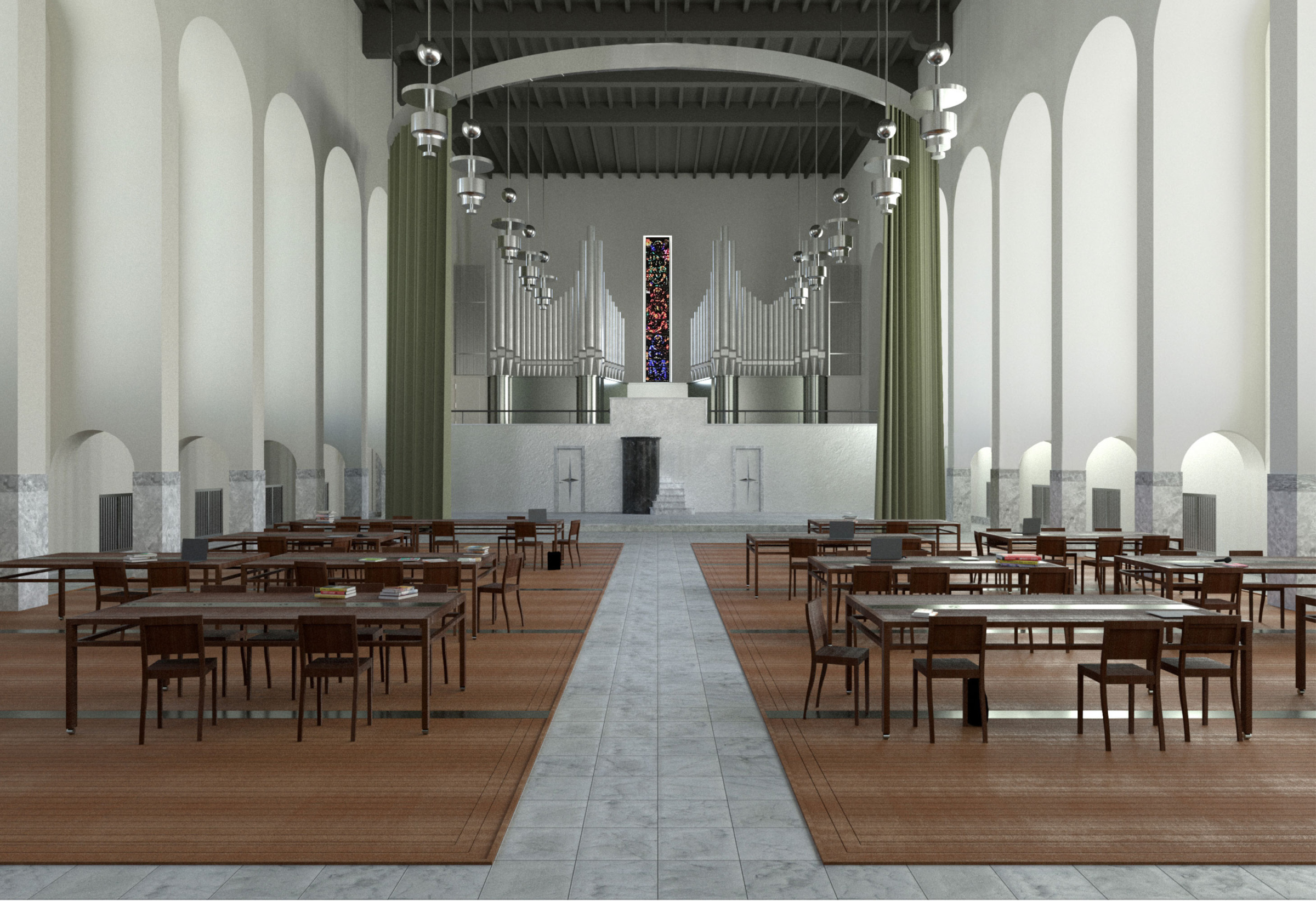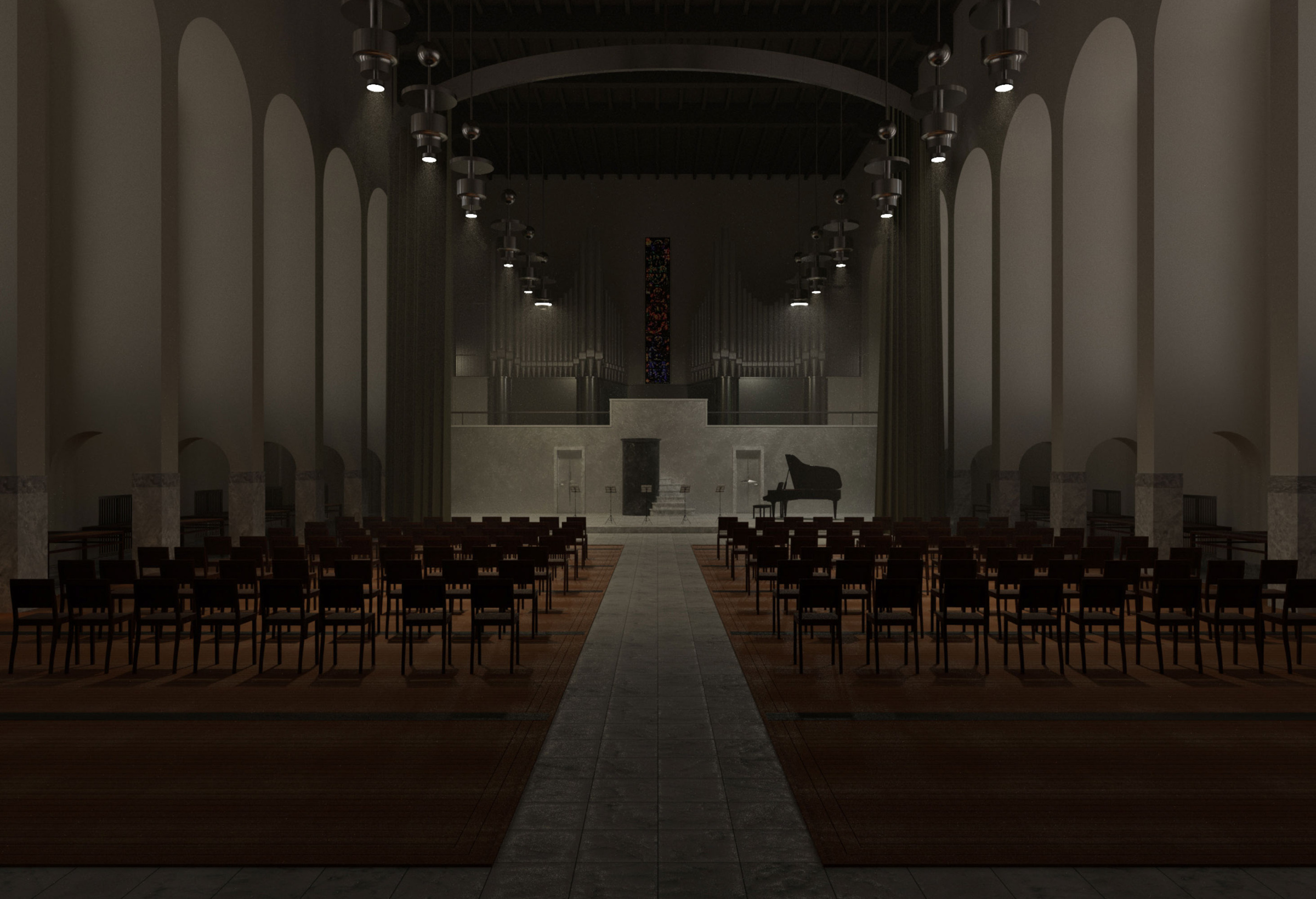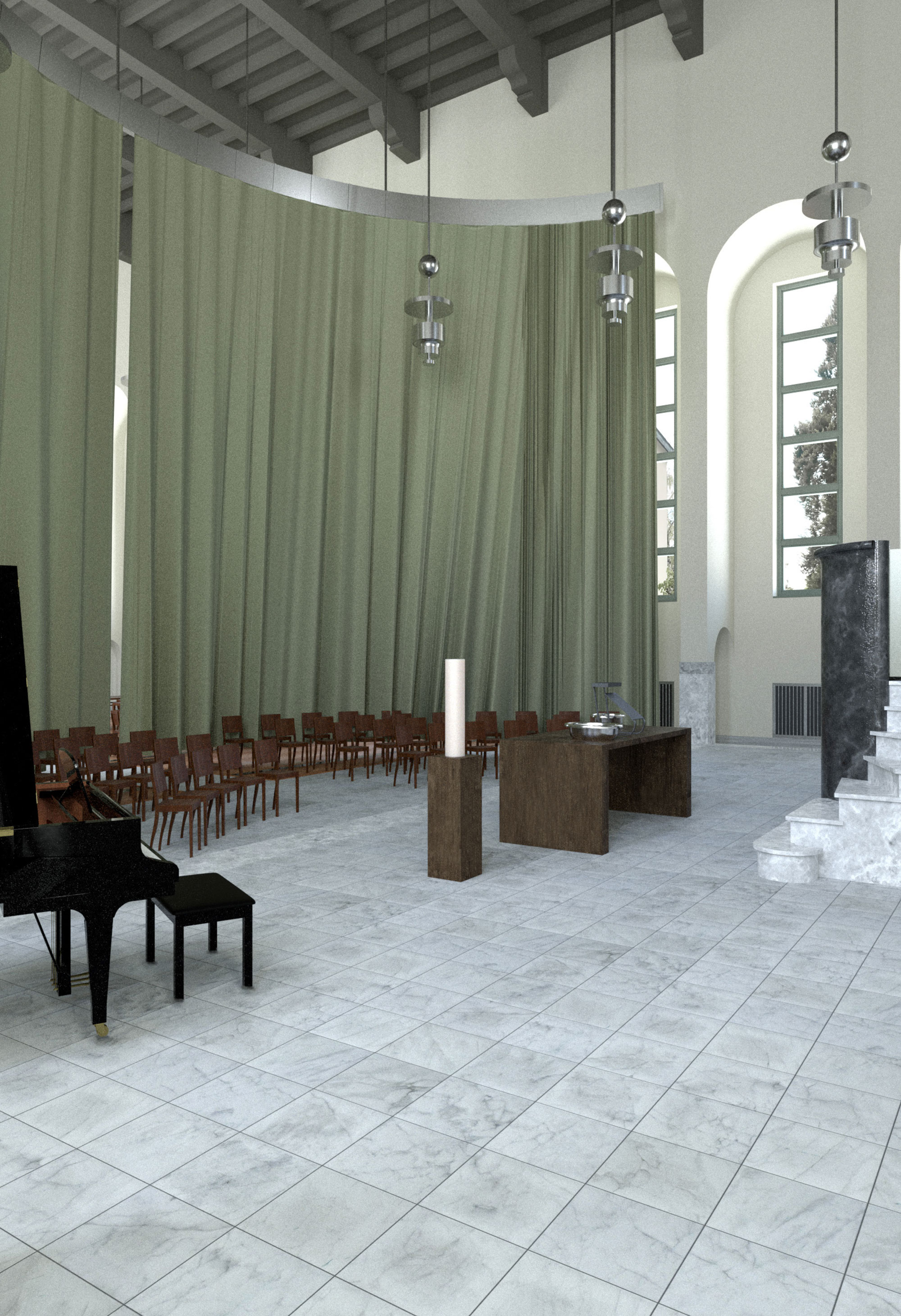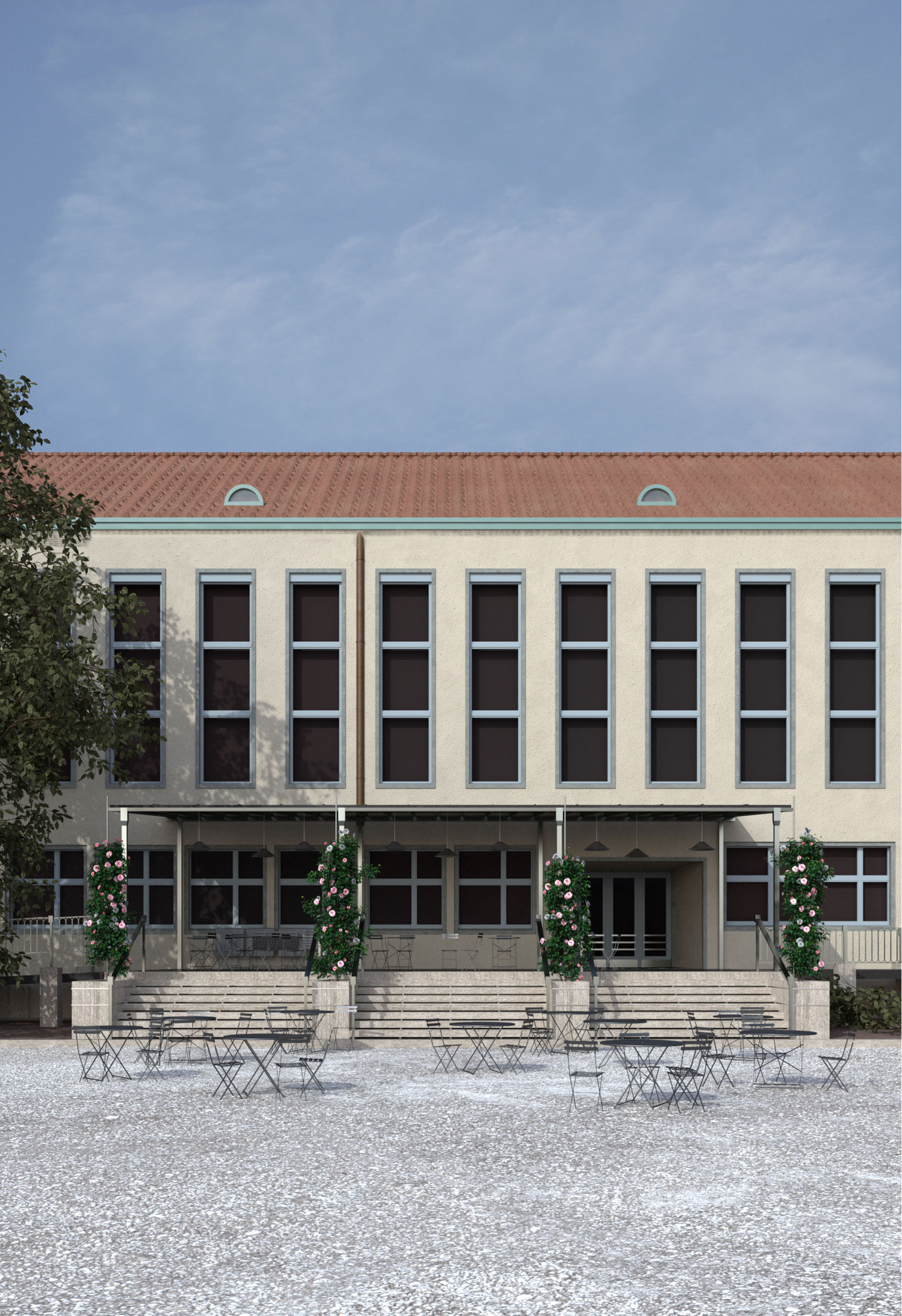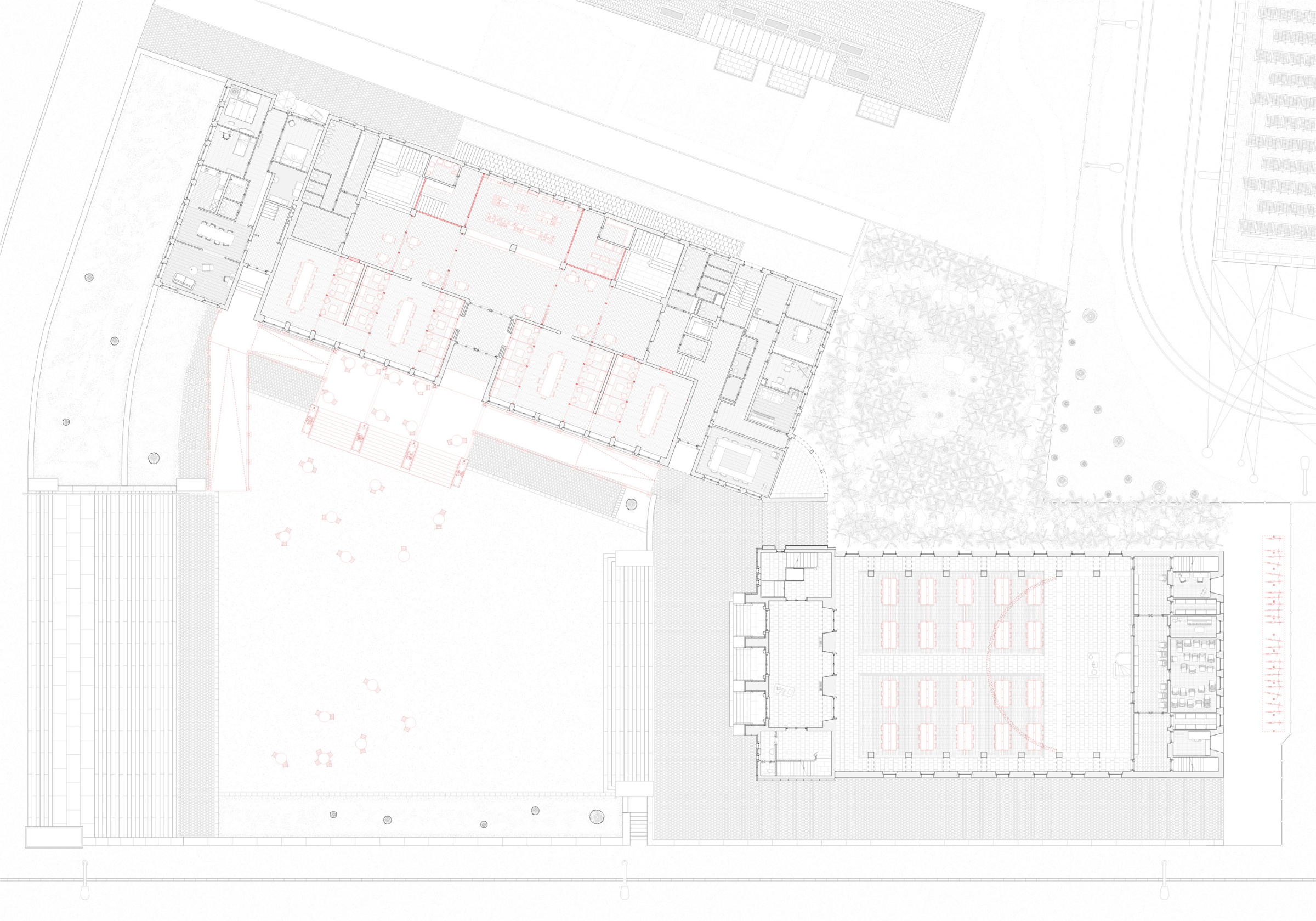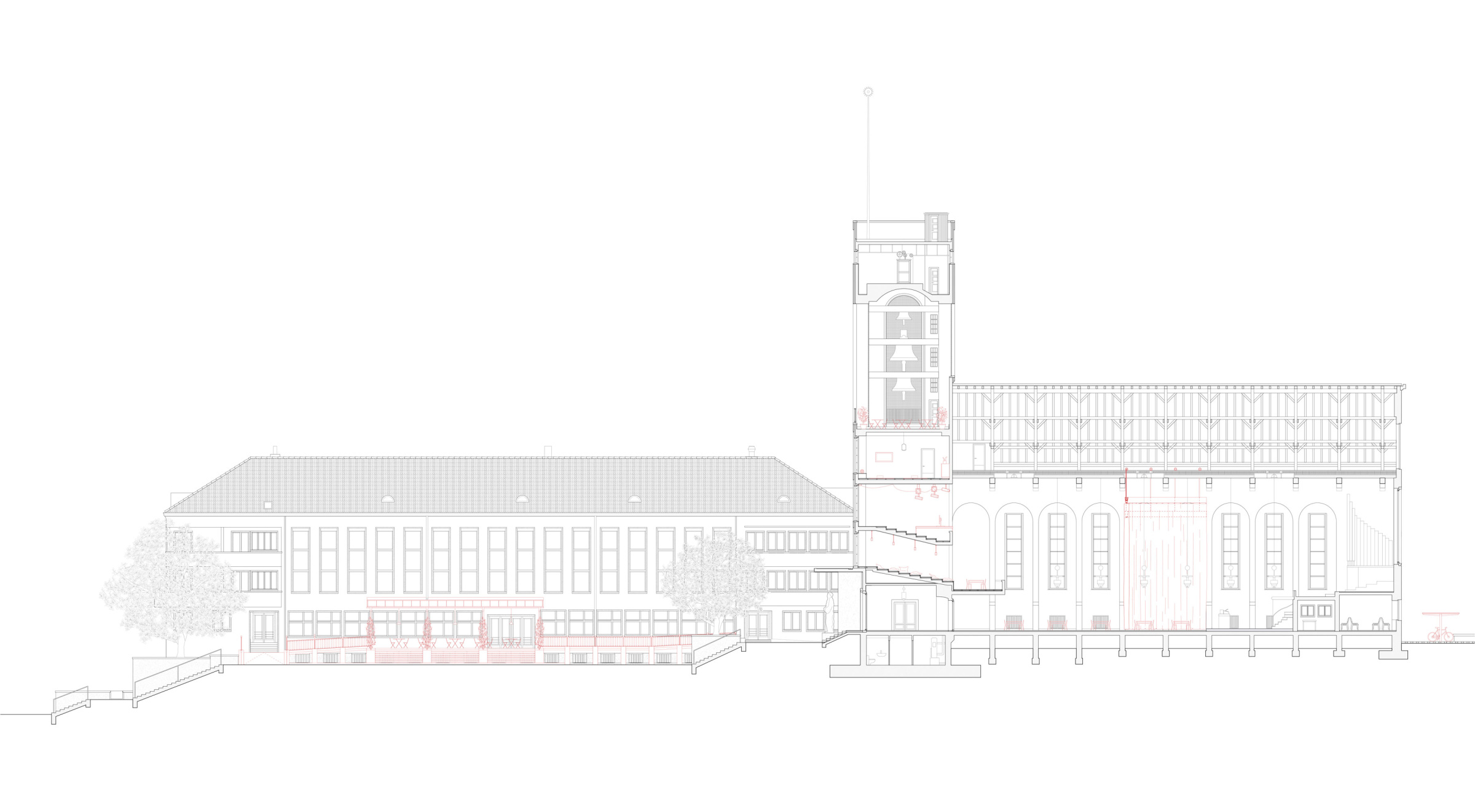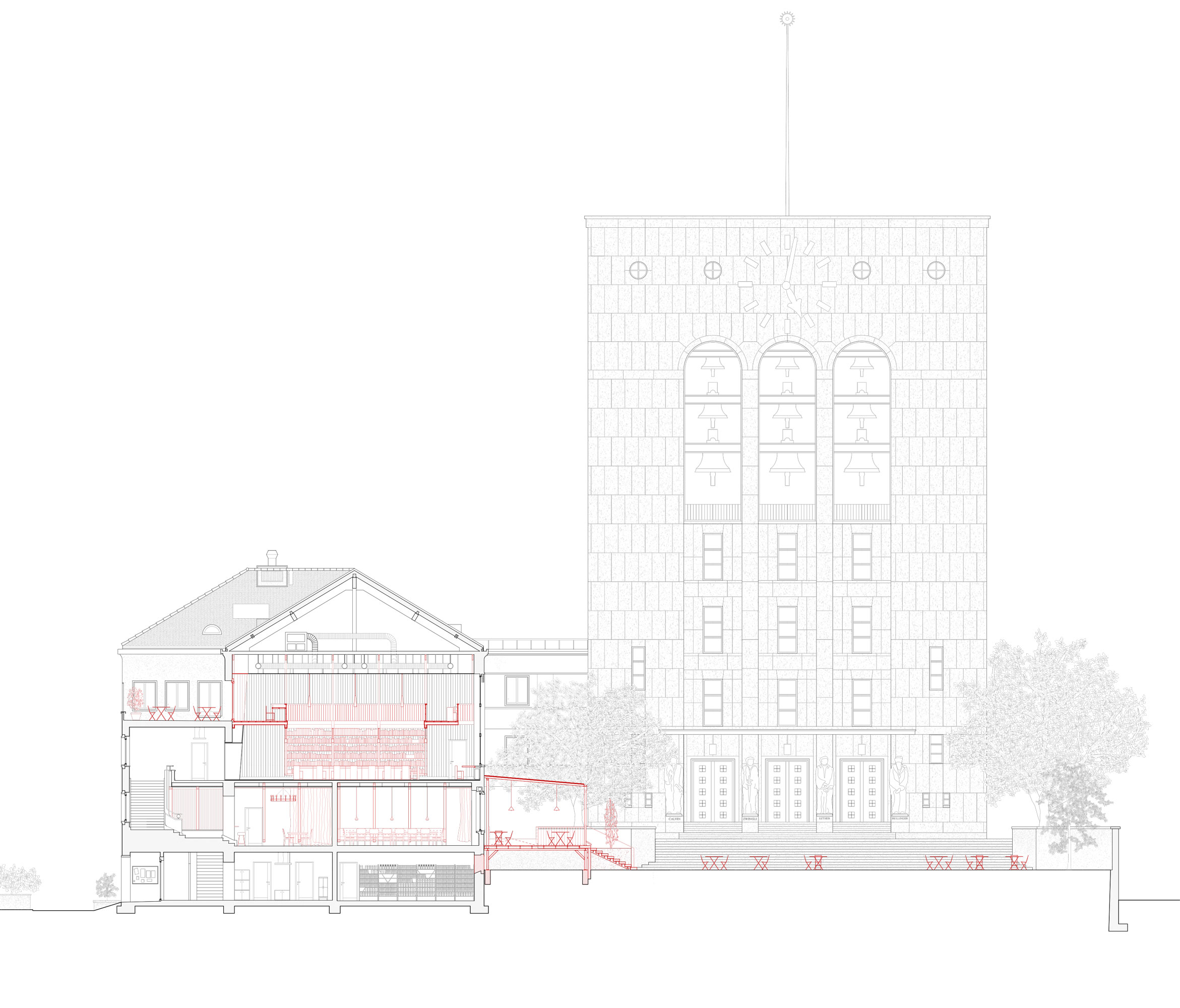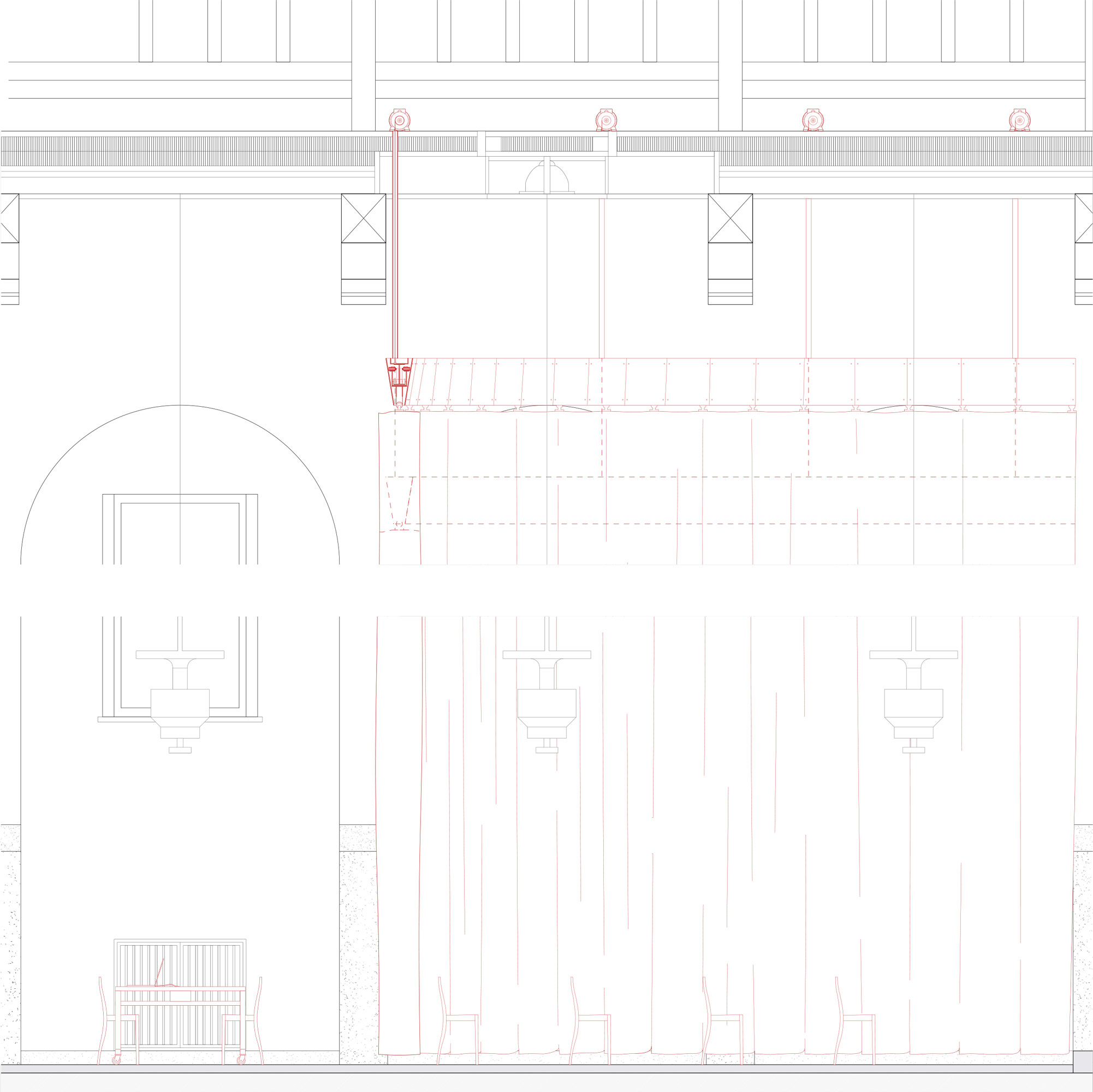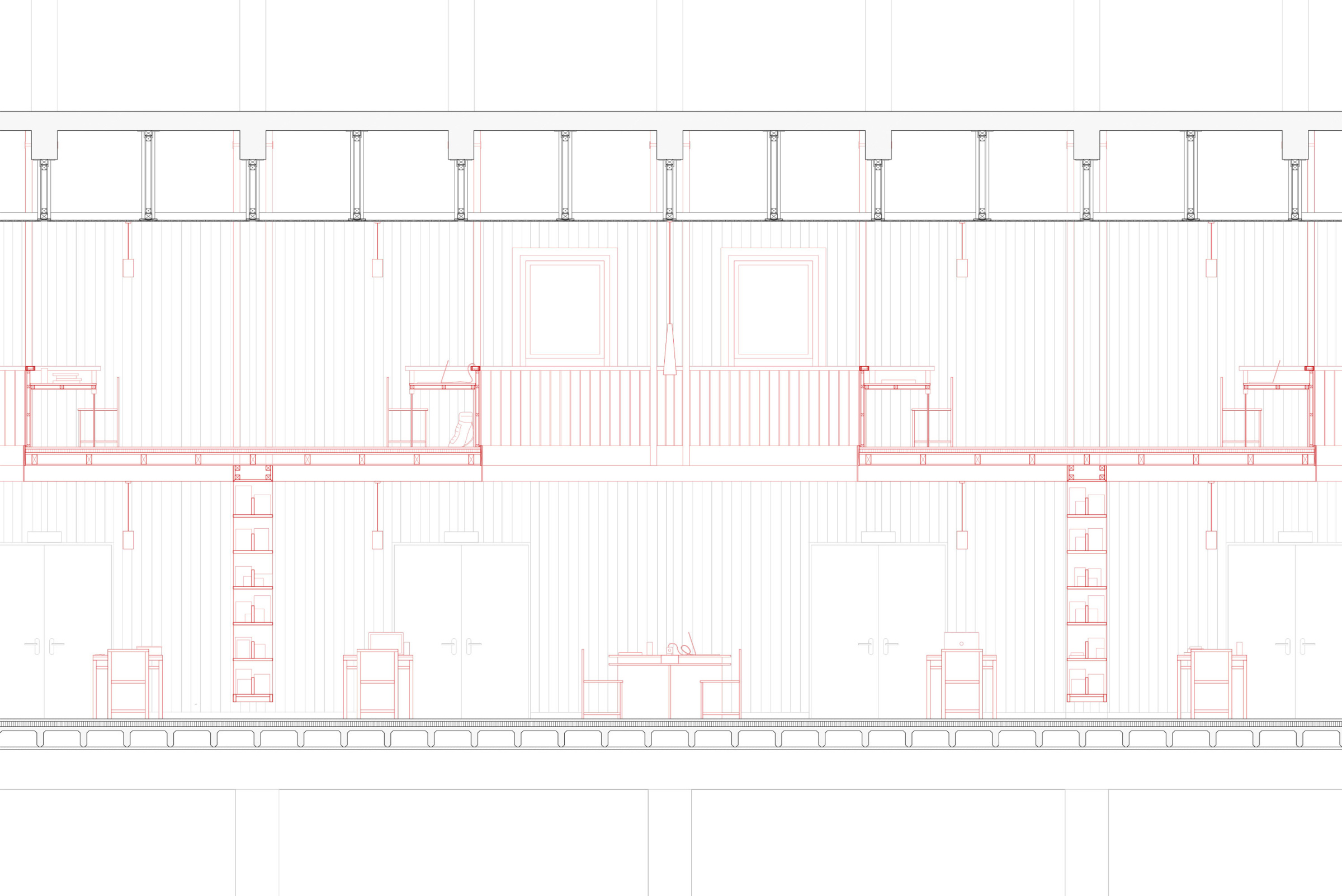What makes a church pretentious? A tall bell tower? An austere, imposing façade? A stubbornly symmetrical interior? A use of elements that try to make it look like a gothic cathedral? A display of large, expensive objects? Maybe it’s above all a feeling of inadequacy. A suburban place of worship in a quiet, modest residential area, if disguised as a cathedral, will undoubtedly appear pretentious. Maybe then it’s a question of the interplay between scale and context.
From afar, what was once a defining element in the silhouette of the city has now become submerged by more imposing figures. It seems that if it were part of the city, and not only part of its local neighbourhood, then it wouldn’t appear so disproportionate. Maybe it should simply stop pretending and actually start being what it wants to be. If it can house 1,400 people, if it can be seen from afar, if it can resonate far away, if it is too much to handle for its local setting, maybe it should stop hiding amidst its quiet sourroundings. Maybe it should start claiming its place in our city.
Maybe what our cities need, and what this building could offer, is a large, open, accessible, free, public space. This is the essence of a church, one could say. Maybe we should try and celebrate emptyness rather than trying to fill it. Consider it as a breathing space, a void for beauty, for society. Maybe this is a way to turn a pretentious, disproportionate, underused church into a place all could use, appreciate and benefit from. By sharing this monument, by celebrating this void, the building’s bad intentions would be corrected, and its good intentions fulfilled.
When the Pauluskirche was built in 1934, it acted as a social centre for the newly-built housing developments, inhabited by people which had come from the countryside or neighbouring countries to work in the booming industry at the time. Nowadays, it could function as a social centre for the ever-growing student population which lacks functional and pleasant spaces to work outside of home or university. Installing a public reading room would better fulfill the possibilities of this building. It could be a calm, almost meditative space, which could still cater for large events if needed. It would be more accessible, turning it into a meeting point between multiple thoroughfares. This could merge the local inhabitants with the students of the Irchel University campus next door, as well as with the general public.
The nave could act as a large, multi-purpose and accessible public interior, used as a reading room most of the time but easily transformable into a auditorium or a concert hall. A curtain, which could be drawn every other Sunday when services happen, could provide a more intimate atmosphere for the fifty churchgoers who regularly attend. On the other side, the parish centre would balance this void by being transformed into a very dense building, equipped with a library, a café, and many small study rooms which could be booked for conferences and so on. Linking these two, the large square would be transformed by adding a loggia to the parish centre, functionning both as an entrance to the study centre, a covered exterior space for the café and a stage for outdoor concerts.
Maybe we should try and celebrate emptyness rather than trying to fill it. Consider it as a breathing space, a void for beauty, for society. Maybe this is a way to turn a pretentious, disproportionate, underused church into a place all could use, appreciate and benefit from. By sharing this monument, by celebrating this void, the building’s bad intentions would be corrected, and its good intentions fulfilled.
